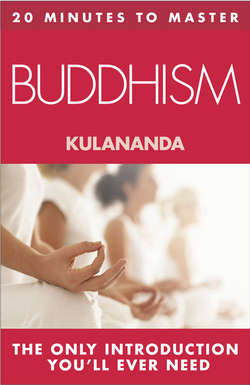Читать книгу 20 MINUTES TO MASTER … BUDDHISM - Kulananda - Страница 13
THE FOUR NOBLE TRUTHS
ОглавлениеAs I have described, the Buddha embarked on the quest for Enlightenment because he was deeply dissatisfied. He’d seen the inevitability of suffering old age, disease and death come to everyone, and he couldn’t just shut his eyes and lose himself in the shallow diversions we usually employ to avoid confronting the starker realities of life.
The Buddha saw that life was marked with one universal quality: it was never entirely satisfying. The Pali term for this quality of unsatisfactoriness is dukkha. Etymologically, it is linked to the idea of an ill-fitting cartwheel – something which doesn’t run smoothly, which is bumpy and uncomfortable. It describes the way things never come out quite right. Our lives contain pleasure and pain, gain and loss, happiness and sadness. But what they don’t contain is ultimate, final satisfaction. We never quite get all we’re looking for. This, the Buddha saw, is the fundamental human predicament.
In addressing himself to the problem of dukkha, the Buddha adopted a classical ancient Indian medical formula: a disease is diagnosed; its cause is identified; a cure is determined; a remedy is prescribed. Applying this analysis to the fundamental human predicament, the Buddha arrived at the Four Noble Truths.
The First Noble Truth identifies the problem. ‘There is dukkha’ – unsatisfactoriness.
Because we are never satisfied, we chase after experience. Constantly seeking satisfaction from the intrinsically unsatisfying, like hamsters in a wheel, we chase round and round, getting nowhere. Gain turns to loss, happiness gives way to sadness. We always seem to think that final, complete satisfaction is just around the corner. ‘If only I can do this or get that, then everything will be fine and I’ll be happy ever after.’ But in reality it’s never like that. The wheel just keeps on turning.
The Second Noble Truth asserts that the cause of dukkha is craving.
We are never satisfied because we have a fundamental disposition towards craving. No matter what we get, no matter how much or how good, we always want more, or we want something else, or we want it to stop.
Between them, craving and its counterpart, aversion, set the shape and boundaries of our personality – ‘I am the person who drives such and such a car; shops in such and such a place; lives in such and such a neighbourhood; wears such and such clothes …’ Thus we create our fragile identities. But the structure is unstable. Things always change. Life flows on and we find ourselves caught up in a remorseless process of continually having to reconstruct ourselves – ‘I like this, I want that; I don’t like this, I don’t want that’ over and over, unendingly. Such is the un-Enlightened human predicament – endless unsatisfactoriness, driven by craving.
The Third Noble Truth asserts that with the cessation of craving unsatisfactoriness also ceases.
This is what the Buddha saw on the night of his Enlightenment. Having seen so clearly that the whole of existence, the endless round of birth and death, is driven by insatiable craving, he could no longer live as if craving would ever produce the final satisfaction with which it constantly enticed. The bonds of craving dropped away, and with it all that had limited and constricted him – he was free.
The Fourth Noble Truth asserts that there is a path which leads to the cessation of craving: the Noble Eightfold Path.
